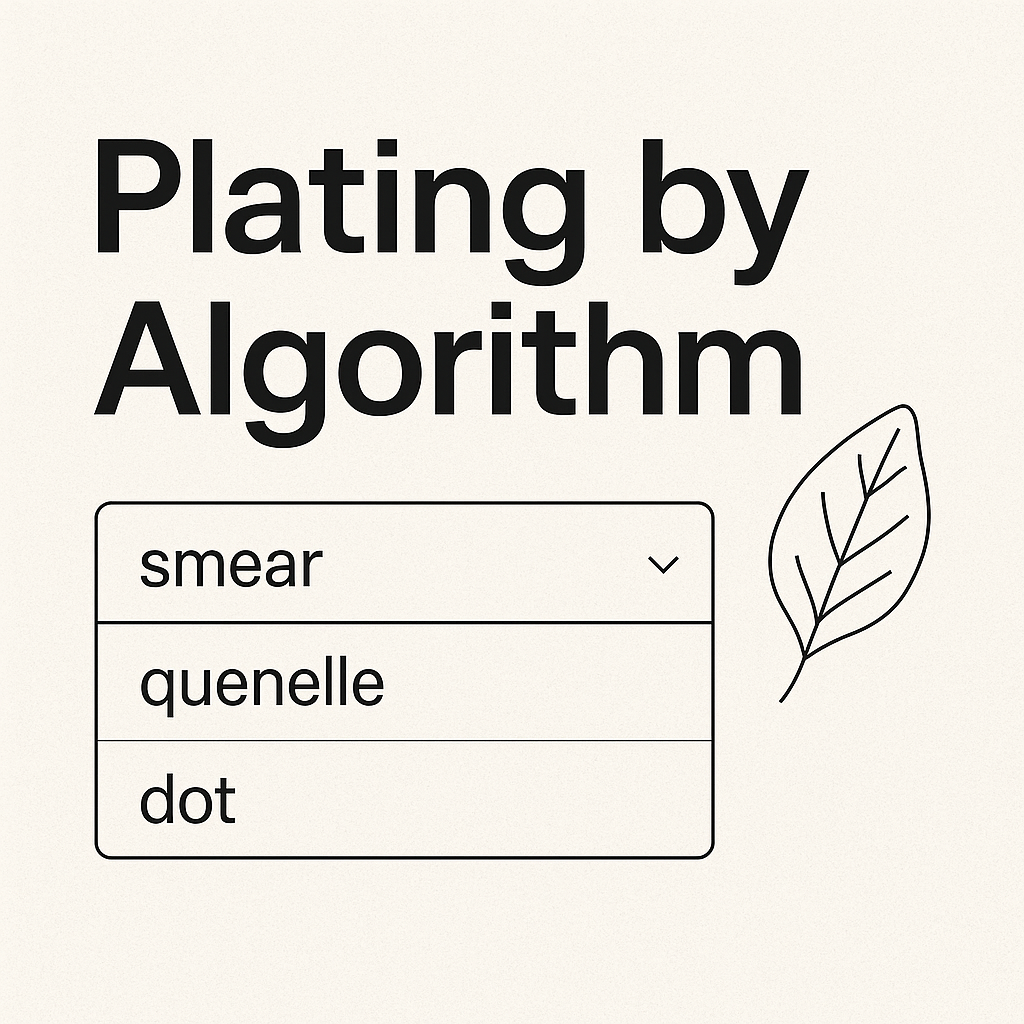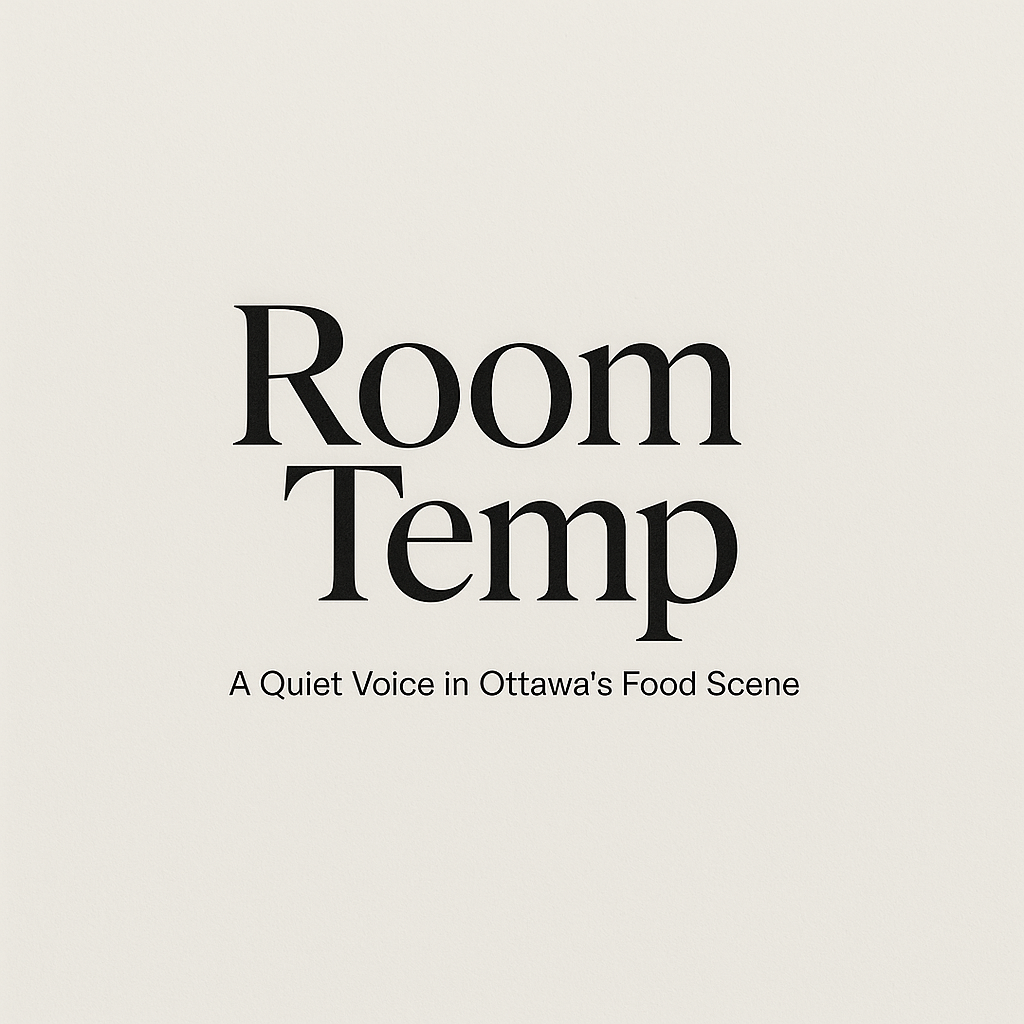Plating by Algorithm

Somewhere out there, an invisible hand is plating all our food. You can see it on Instagram: the smear at 8 o’clock, the quenelle balancing at 2, two dots mirroring each other like suspicious eyes. The plate might change, the protein might change, the restaurant might change — but the layout is identical.
It’s as if there’s a secret software quietly arranging everything for chefs before service begins. Call it PlateGPT: “Here is your dish, chef. Would you like one leaf tuile or two?”
What was once the creative punctuation of fine dining — a single brushstroke of purée, a perfectly imperfect crumble — has been reduced to design templates that feel like they were selected from a drop-down menu.
And diners notice. They might not have the vocabulary for it, but they know when a dish looks like something they’ve already seen twenty times that month. It’s the culinary equivalent of déjà vu — not bad, just eerily familiar.
The best plates are still out there, but they’re the ones that make you pause because you can’t quite decode how they came together. They feel personal, not programmatic. The next era of plating might be less about precision and more about risk — a little chaos on the plate, a little soul back in the dining room.
Because if every plate looks the same, it might as well come with a “like” button.
